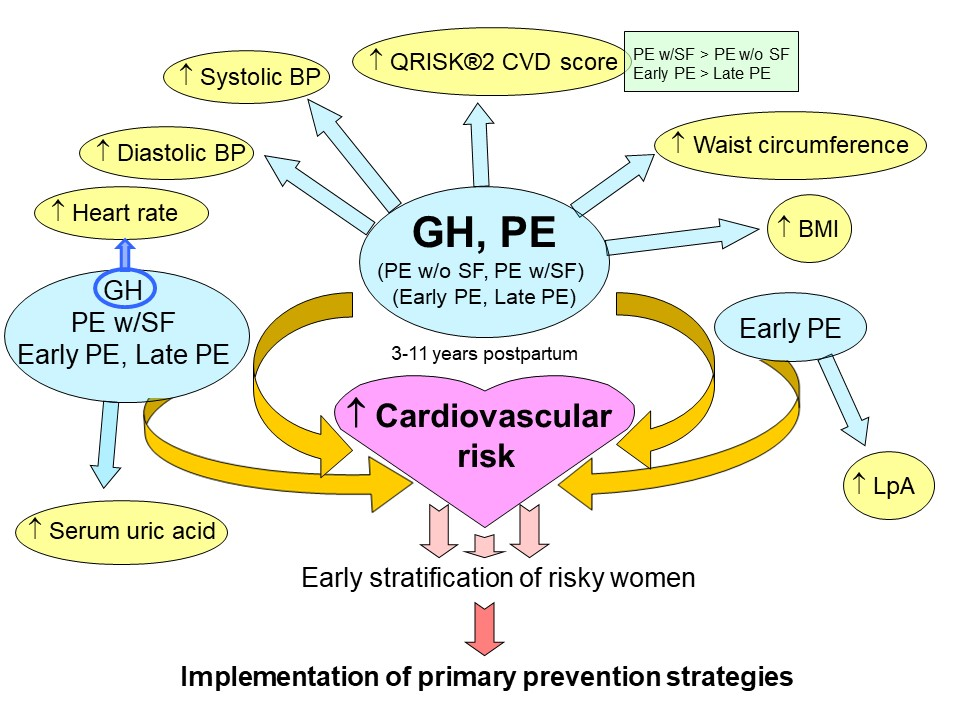The aim of the present study was to assess the long-term outcomes of women 3-to-11 years postpartum in relation to the previous occurrence of pregnancy-related complications such as gestational hypertension (GH), preeclampsia (PE) and fetal growth restriction (FGR). Body mass index (BMI), waist circumference values, the average values of systolic (SBP) and diastolic (DBP) blood pressures and heart rate, total serum cholesterol levels, serum HDL (high-density lipoprotein) cholesterol levels, serum LDL (low-density lipoprotein) cholesterol levels, serum triglycerides levels, serum lipoprotein A levels, serum CRP (C-reactive protein) levels, plasma homocysteine levels, serum uric acid levels, individual and relative risks of having a heart attack or stroke over the next ten years were compared between groups (50 GH, 102 PE, 34 FGR and 90 normal pregnancies) and correlated with the severity of the disease with regard to clinical signs (25 PE without severe features, 77 PE with severe features), and delivery date (36 early PE, 66 late PE). The adjustment for potential covariates was made, where appropriate. At 3–11 years follow-up women with a history of GH, PE regardless of the severity of the disease and the delivery date, PE without severe features, PE with severe features, early PE, and late PE had higher BMI, waist circumferences, SBP, DBP, and predicted 10-year cardiovascular event risk when compared with women with a history of normotensive term pregnancy. In addition, increased serum levels of uric acid were found in patients previously affected with GH, PE regardless of the severity of the disease and the delivery date, PE with severe features, early PE, and late PE. Higher serum levels of lipoprotein A were found in patients previously affected with early PE. The receiver operating characteristic (ROC) curve analyses were able to identify a substantial proportion of women previously affected with GH or PE with a predisposition to later onset of cardiovascular diseases. Women with a history of GH and PE represent a risky group of patients that may benefit from implementation of early primary prevention strategies.

- BMI (body mass index), blood pressure
- cardiovascular diseases
- gestational hypertension
- fetal growth restriction
- heart rate
- preeclampsia
- risk
- serum markers
- QRISK®2 risk score
- waist circumference
This research was funded by the Agency of Medical Research, Ministry of Health, Prague, Czech Republic, grant number AZV 16-27761A. All rights reserved.
 Encyclopedia
Encyclopedia



